I hinted in a previous post that i am looking into new solutions for solar power. I finally decided on one and made a YouTube video about it.
Solstice
Meet Project Solstice, the solar station infrastructure core experiment. As the name says, it is a central power station for most future experiments (at least the stationary ones). This will remove the burden of designing solar power into every future project. In the long run, it will also drastically reduce the money and time required for future missions.
This project took me way longer than expected. True, i could have just hooked up whatever experiment i wanted directly to the charge controller. But i wanted to integrate Solstice into the GSP network, which includes remote readout of all important system values (power produced and consumed, battery charge level etc). Also, i wanted the ability to turn on/off the various consumers at the source. And as part of the GSP network, Solstice can and will act as radio relais for future GardenSpaceProgram missions.
It was also my first small step into learning how to design printed circuit boards. There were a few snafus on the way, but all in all it worked out quite nicely for a first project.
Ok, enough babbling, you are probably here for the pictures. Solstice is still in the early stages, but here is what i got so far:
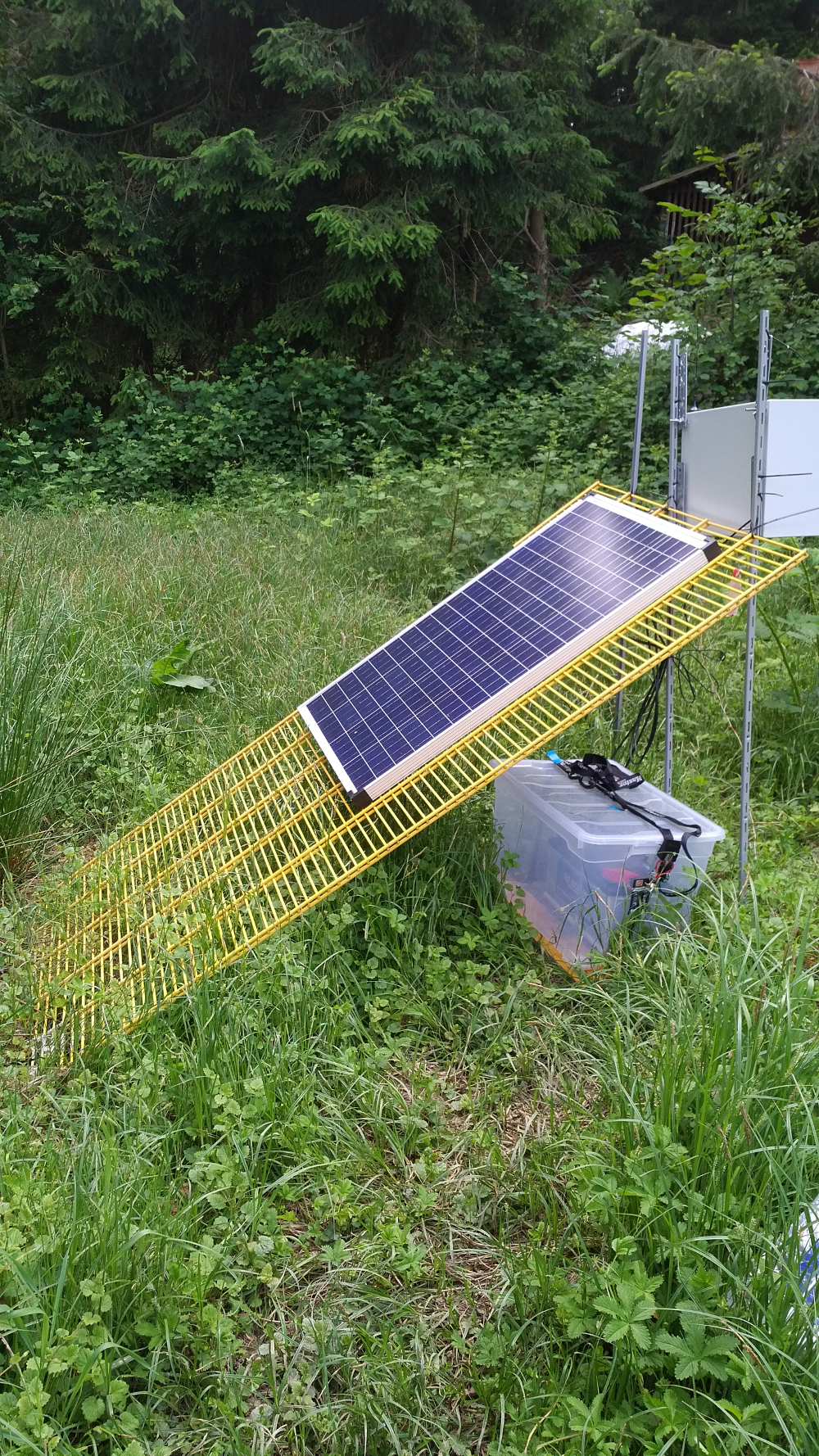
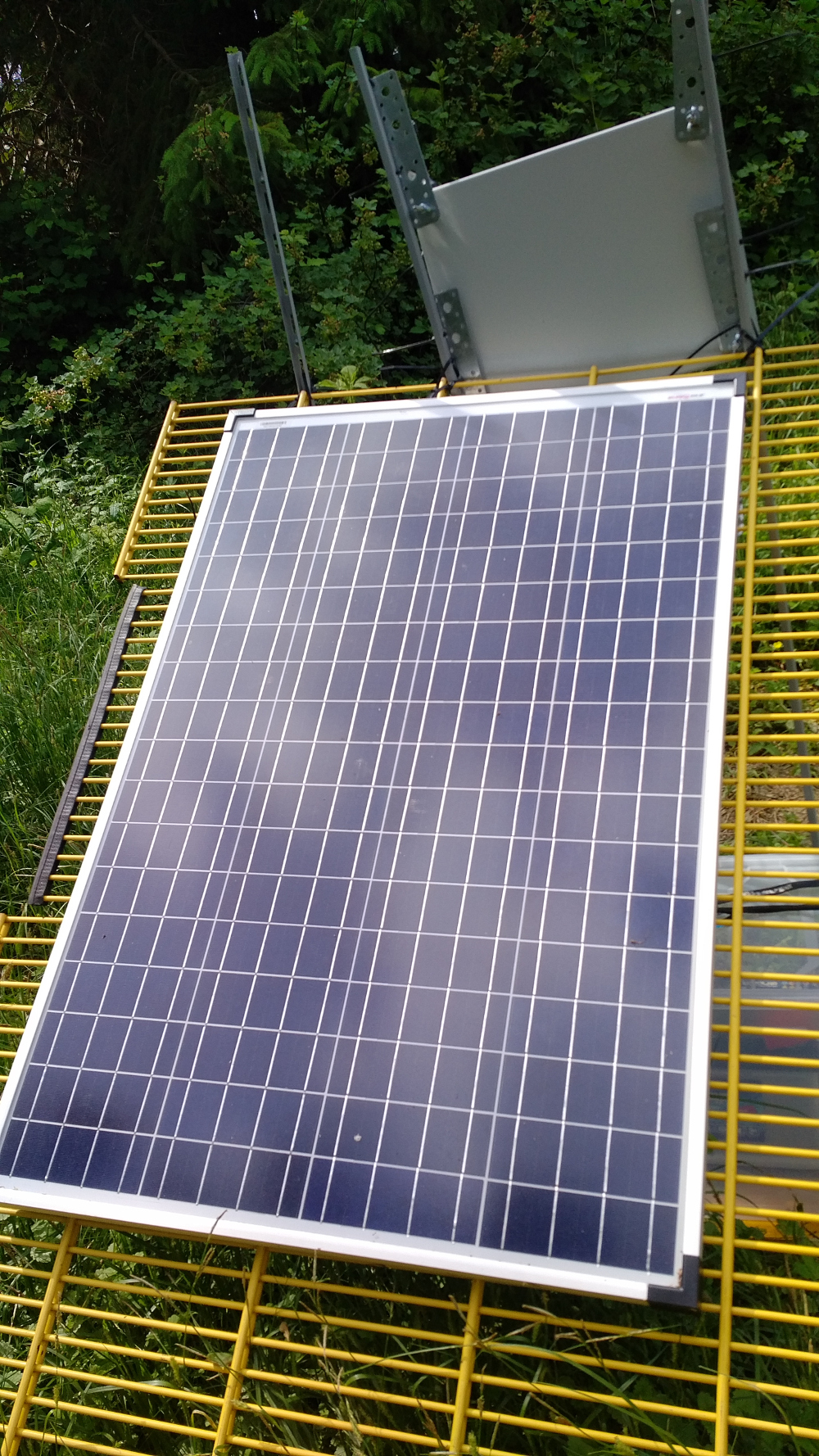


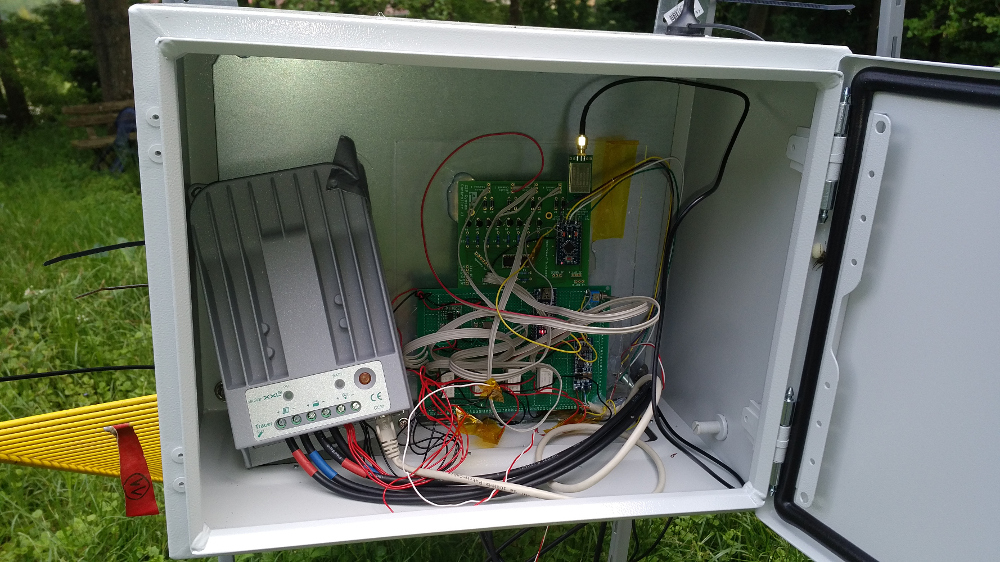
I will post more technical details soon.
DrivewayLights
Project DrivewayLights is a small test project for Solstice. Mostly, it's there to replace my ancient (and now passed away) solar lights for my driveway. I'm also using it to test out new, low-cost mounting techniques for outdoor projects. And yes, i'm running into some problems on that front.
DrivewayLights is integrated into the GSP network as well and is an integral part of the GardenSpaceProgram. As you can see, it's also a work in progress:
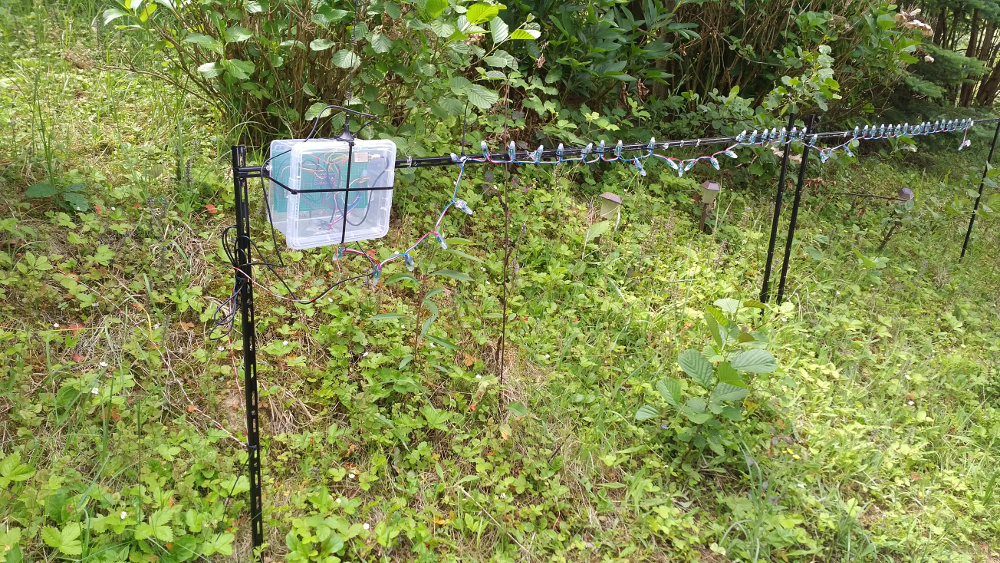
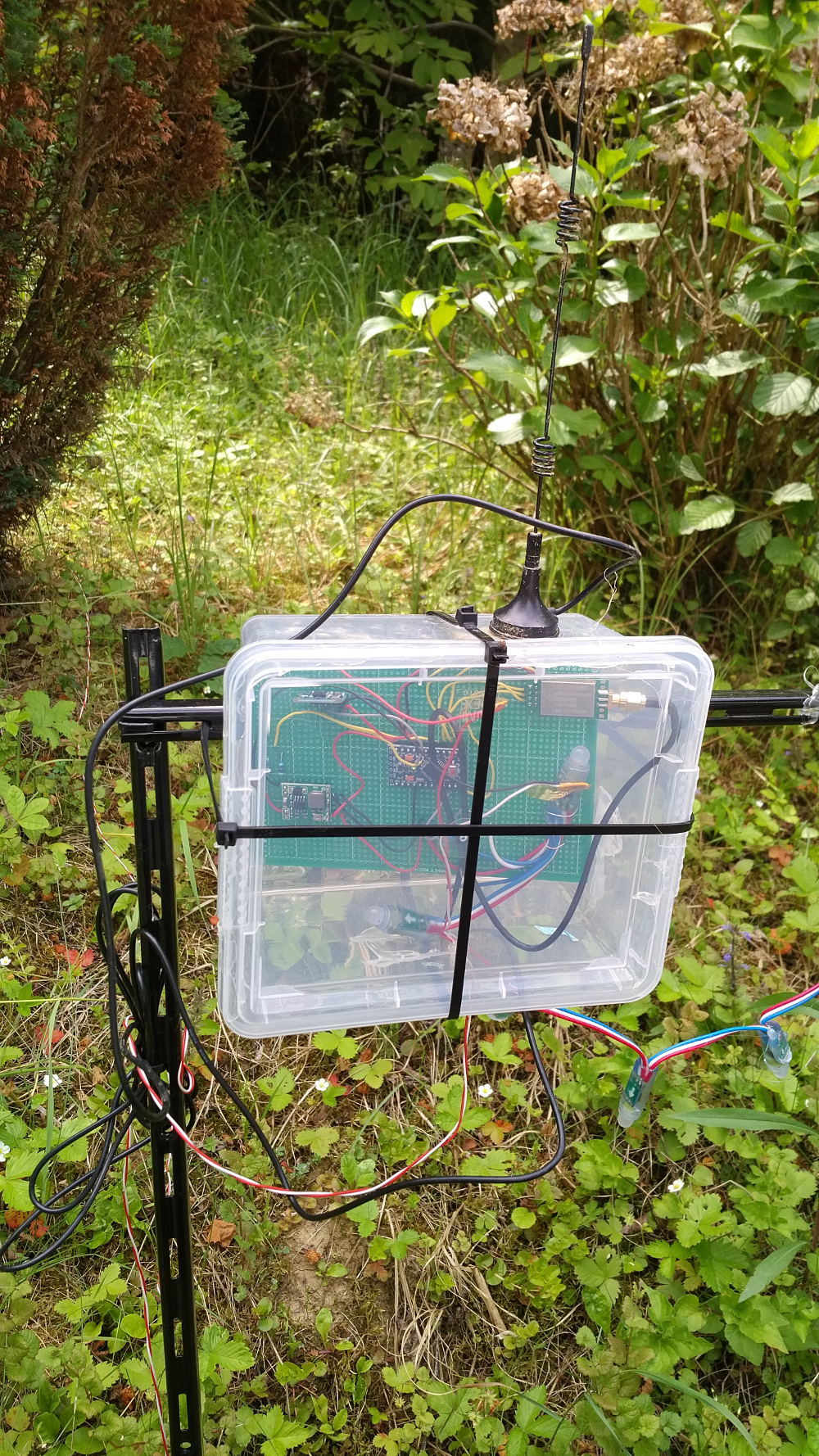
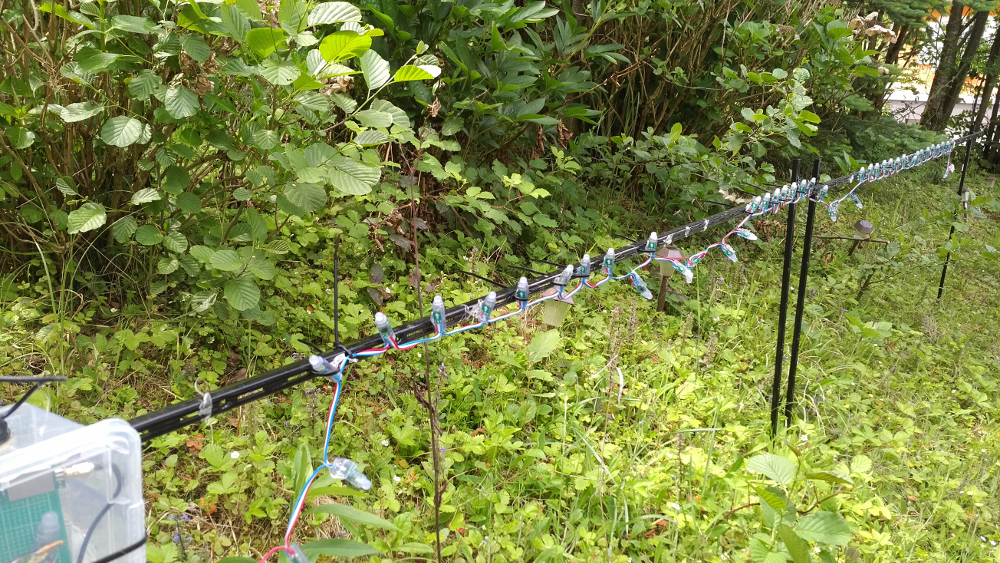
WaterFeeler2
As said before, WaterFeeler2 is at the end of its life. With Solstice now online, WaterFeeler2 will be shut down and go in the shop (also called "my living room") for a major re-engineering.
It will loose it's solar panel but retain its battery and PWM solar charger. This design decision stems from the fact that the next location will be quite far away from Solstice, which limits how many Amps i can get there before i would have to use expensive cables. The idea is to use the existing battery (it still has a small amount of capacity) and charger to buffer power for some high power operations. In the case of WaterFeeler2, this is mostly while taking images and moving the servo. All other operations, including downloading data from PanCam should be in the power budget of the connection to Solstice.
WaterFeeler2 will also get a new soil moisture sensor that uses induction instead of direct electrical contact to the soil/water. This will prevent the sensors from degrading over time, because there will be no corrosion.
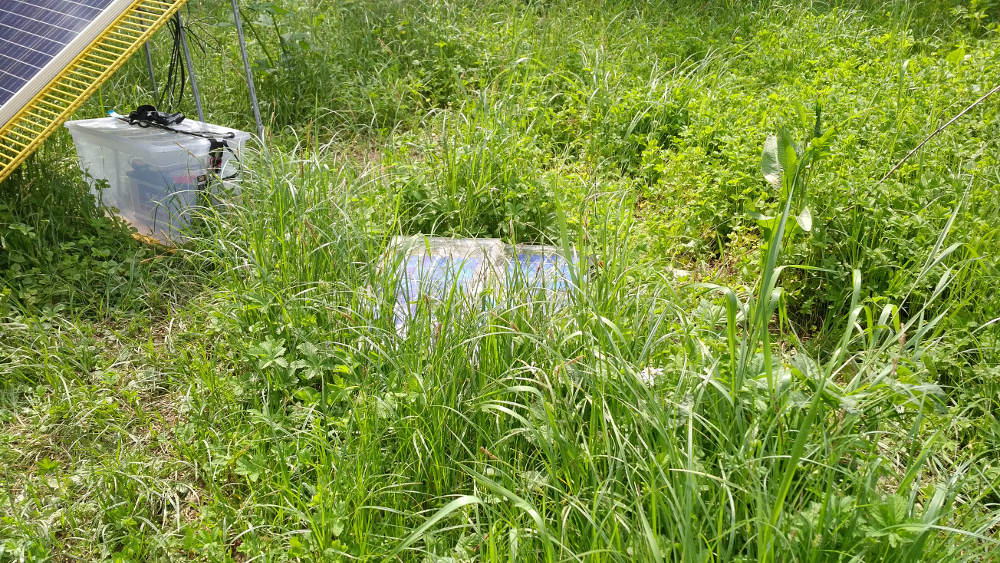
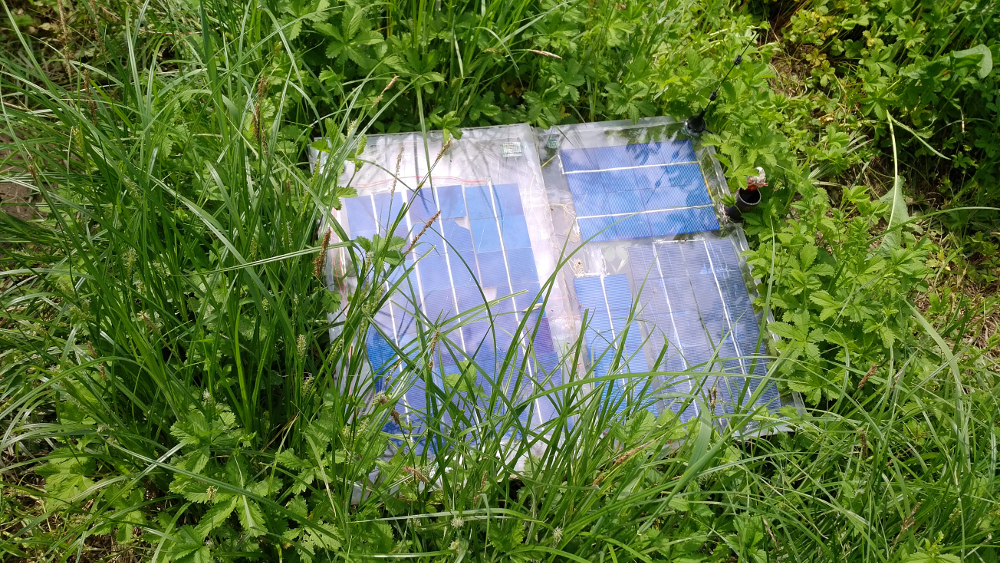
Again, details will follow soon.
|





